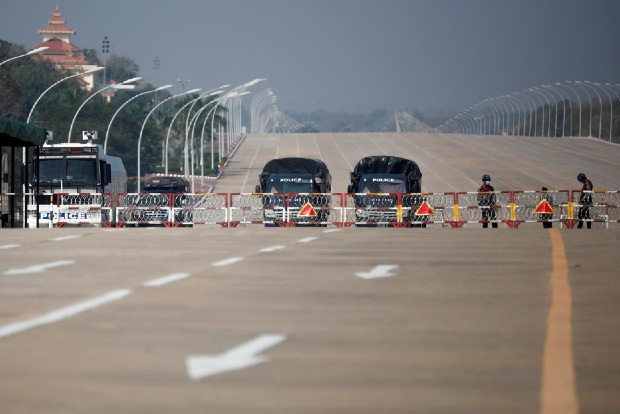Begin typing your search...
Of Protest Anthems: Myanmar’s coup spurs the art of defiance
The creative classes are providing a mass uprising in the country with an imaginative verve and rebellious spirit that has caught the military generals off guard. Most nights since a coup returned Myanmar to military rule on Feb. 1, a spectral symbol of protest has glowed on a mildewed side of a building.

Chennai
Where the next illumination will appear in Yangon, the country’s biggest city, is a mystery. But, suddenly, a projected image appears in the dark. Three fingers raised in a rebellious pose. A dove of peace. The smiling face of Daw Aung San Suu Kyi, whose government was ousted in the army putsch. The projections are the brainchild of a filmmaker who wishes to remain anonymous as the military hunts down those who dare to defy it.
Armed with paintbrushes, poems and protest anthems, the creative classes are providing Myanmar’s mass uprising with an imaginative verve and rebellious spirit that has caught the military generals off guard. During daily street rallies in the country’s major cities, the atmosphere often has the feel of a cultural carnival. Graffiti artists have spray-painted messages mocking Senior Gen. Min Aung Hlaing, the army chief who staged the coup. Poets have declaimed in angry verse. A cartoonists’ union marched holding hand-drawn figures. Street dancers twirled with abandon. On Wednesday, in the biggest single rally since street protests began in Yangon, hundreds of thousands of people gathered in a central district, holding up posters and signs designed for the Instagram generation.
“If we look at the history of resistance in Myanmar, we were quite aggressive and confrontational, with this history of bloodshed,” said Ko Kyaw Nanda, a graphic designer whose protest art contrasts green pig heads (the army) with ruby red heels (Ms. Aung San Suu Kyi). “With this new approach, it can be less risky for people, and more people can join.” Myanmar’s military, which has ruled the nation for most of the past six decades, has locked up more than 450 people since the coup, according to a group that tracks political prisoners. The new regime has drastically diminished civil liberties, and its long history of violently suppressing dissent lingers. Security forces have shot and beaten anti-coup protesters. On Wednesday evening in the city of Mandalay, soldiers swept through an area housing railway workers who were boycotting work, shooting multiple rounds. At least one person was confirmed injured, but the weapons of dictatorship have not deterred peaceful demonstrators, who have depended on humorous memes and protest art to carry them through.
“If the young people are out on the street then why can’t I be?” said Daw Nu Nu Win, a retired civil servant who at the rally on Wednesday carried a laminated sign with the face of Ms. Aung San Suu Kyi. “I want the whole nation to be out from under dictatorship.” Online art collectives have made their designs free so that protesters can print them out for signs, stickers or T-shirts. One of the most popular pieces shows a collection of hands arranged in the three-finger salute from “The Hunger Games” films. Each hand was drawn by a different artist, a mosaic of defiance. Every night at 8 p.m., cities across Myanmar have clanged with the din of people banging pots, pans, woks and anything else that makes a ruckus. The aim is to ward off the devil, and the projection art appears at this time, too, adding visuals to the clamour of discontent.
Myanmar’s military rulers have long seen menace in the arts, imprisoning poets, actors, painters and rappers. Among the dozens of people nabbed alongside Ms. Aung San Suu Kyi in the coup’s initial pre-dawn raids were a filmmaker, two writers and a Reggae singer. A graffiti artist whose protest tags have enlivened Yangon over the past two weeks said he was on the run from the police. So were two poets. On Wednesday, arrest warrants were issued for actors, directors and a singer.
In the region, there is a fight for democracy, human rights and justice,” said U Aye Ko, a painter in Myanmar whose art has long expressed political yearnings. “The movement is beyond one nation’s issue. We have all joined together in the resistance against oppression.”
Beech is the Southeast Asia bureau chief for NYT©2020
The New York Times
Visit news.dtnext.in to explore our interactive epaper!
Download the DT Next app for more exciting features!
Click here for iOS
Click here for Android
Next Story



